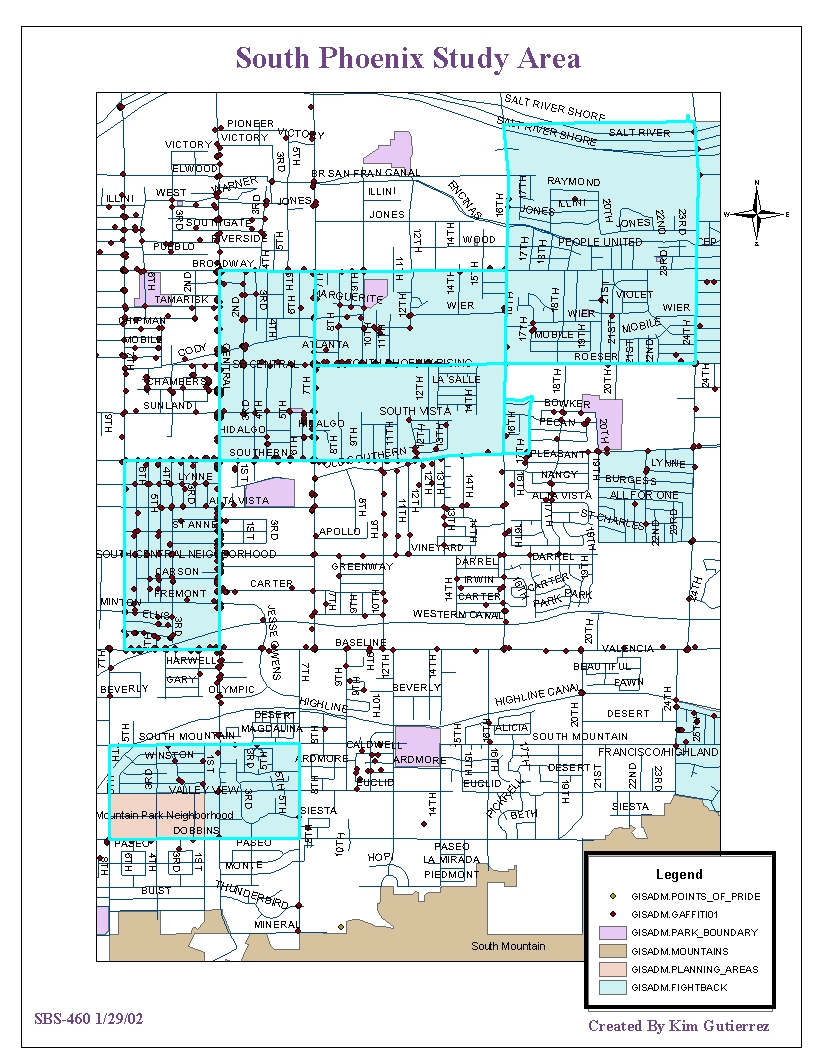
History of Phoenix Overview
An incorporation of class readings for quick refresh (only represents a small fraction of the history of Phoenix)
Written by
Amber Blumgren
The founders of Phoenix, the new pioneers of the 1860ís, were not deterred by the difficulty of irrigating the vast desert lands, for this was to be these developers home for their new town. The "name, Phoenix, represented life rising anew from the remains of the past" (Luckingham, p. 2). They extended the Hohokam irrigation structure and created ample water supply to jump start the chain reaction of increased production, the creation of new markets, and the construction of railroads to import and export goods.
During the 1900ís business was expanding rapidly in the downtown Phoenix area and continued along Central Avenue between Van Buren and Jefferson streets. A little further south, beyond the warehouses, lumberyards, and the railroad depots, enclosed the poorer residential neighborhoods while the more prosperous housing areas were being developed in the northern parts of the city.
Gambling and prostitution had urbanized into booming businesses in Phoenix during the 1920ís. Not surprisingly, south Phoenix was home to most of the brothels and gambling locations in amongst the low-rent neighborhoods making up the area. Minorities of this time trying to earn a living were forced to be source of cheap agricultural and domestic labors.
"By the 1930ís Phoenix was well established as the leading city in Arizona and the second largest urban center in the Southwest" (Luckingham, p. 8). Phoenix did have problems as a result of the Great Depression but was fortunate to not endure as much hardship as the older cities in industrial America. The highest amount of suffering was felt by the minorities; life was specifically difficult for residents of the poor south Phoenix neighborhoods. "Institutions and leaders soon emerged in south Phoenix during the 1930ís to combat problems intensified by the Great Depression" (Luckingham, p. 120). However, the struggle for progress among Hispanics, blacks, and other minority groups was slow, difficult, and not without many obstacles (ex: racially segregated schools).
Even though progress for minorities was sluggish, economic activity and the Phoenix lifestyle lured thousands of people of multiple nationalities. Maricopa County "more than tripled its population between 1940 and 1960" (Luckingham, p. 176). The Rio Salado Project, which began in the 1980ís to transform the Salt River into "a water wonderland of streams and lakes" is a prime example of how Phoenix continues to entice many.
In discussing the more present day city, "for planning purposes Phoenix is divided into 13 urban villages" (Burns & Gober, p. 14). The theory behind the villages is to split up an enormous city into more controllable districts in aim of a sense of local identity among residents. "Phoenix has been said to lack neighborhood identity" according to article in the Landscape Journal (1996) (Blake & Arreola, p. 23). Revealed in the same article, "analysis of subdivision names and landscape traits finds that identity actually flourishes in metropolitan Phoenix subdivisions" (Blake & Arreola, p. 23).
Phoenix has grown and prospered. But, there are still areas such as south Phoenix, which are still "areas of severe economic and social distress" and lets us know the room for improvement is endless.
(below is a map of class study area)
